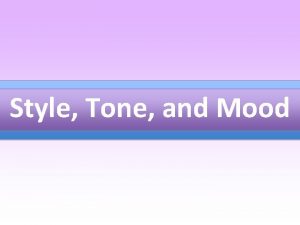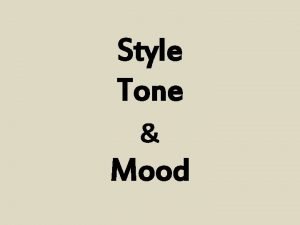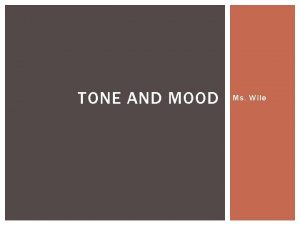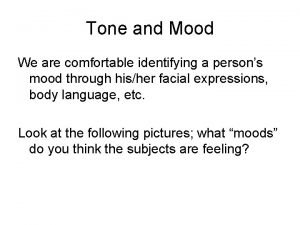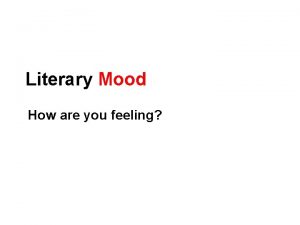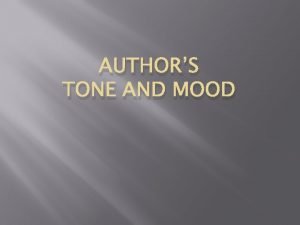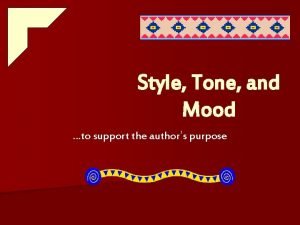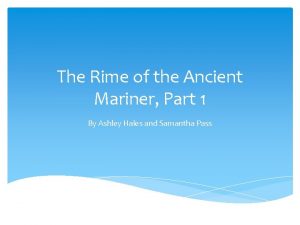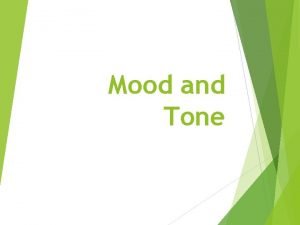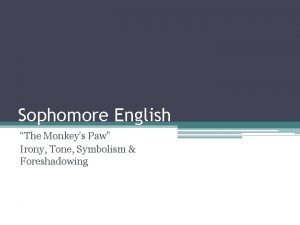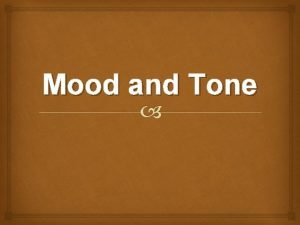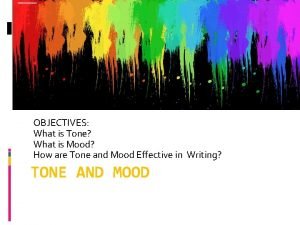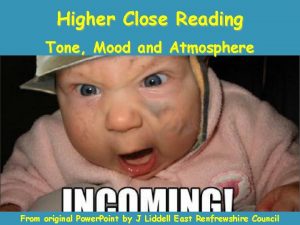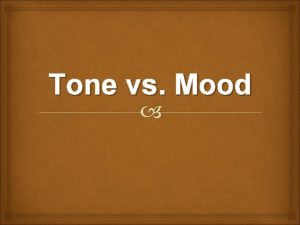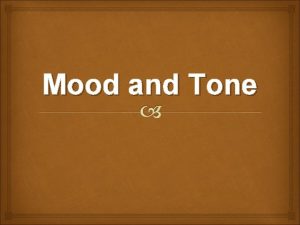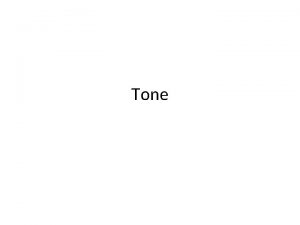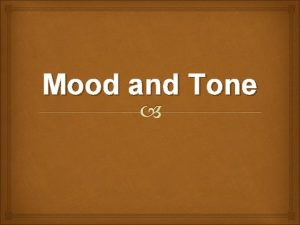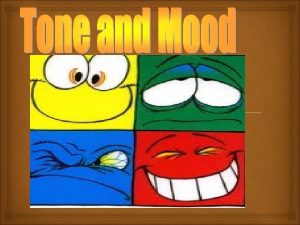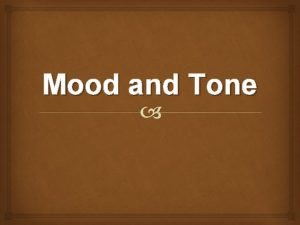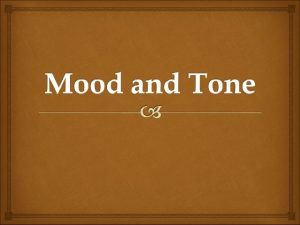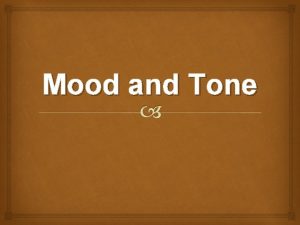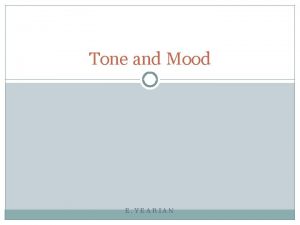Style Tone Mood What is STYLE STYLE is
















- Slides: 16

Style Tone & Mood

What is STYLE? STYLE is the way the author uses words, phrases, and sentences.

Style: Formal vs. Informal

Formal: Dear Sir, After examining your job description, I feel I am an excellent candidate. My résumé is attached. Sincerely, Andrew Meyer

Informal: OMG Sara! What's up for tonight? Call me b 4 you guys leave, okay? I have got to tell you something lol! --Beth

TONE is simply the author’s attitude toward the subject. Tone must be inferred through the use of descriptive words.

Tone Example The girls were playing in the pond, but kept looking over their shoulders at the looming forest. The long grass of the field kept moving and they sort of felt like they were being watched. It seemed like a pair of dark eyes were on them.

Tone Example The tone of this passage is threatening, suggesting a sense of fear. Words like “dark, ” and “looming” lead readers to the tone.

TONE EXAMPLE Finally, one of the girls pointed to the grass and giggled. "Meow!" A cat sat on the edge of the field and licked its paw. They did indeed have company.

TONE EXAMPLE The tone of this passage is happy and content, as there was a successful, happy resolution to the problem.

MOOD is the overall feeling(s) or emotions that are created IN THE READER. The “power of the pen” can move mountains. Authors “move” their readers’ moods through their choice of words and level of detail.

MOOD EXAMPLE During the holidays, my mother's house glittered with decorations and hummed with preparations. We felt warm and excited, listening to Christmas carols and even singing along sometimes.

MOOD EXAMPLE Mood: Content, happy. How do we know? • Words like "warm, ” “excited, ” and “glittered” are used by the author.

MOOD EXAMPLE After New Year's the time came to put all the decorations away and settle in for the long, cold winter. The house seemed to sigh as we boxed up its finery. The tree was dry and brittle, and now waited forlornly by the side of the road.

MOOD EXAMPLE Mood: Dreary, depressed. How do we know? • "cold, sigh, brittle, forlornly"

MOOD Identifying the mood of a piece of writing will depend on the number of descriptive words you know to answer the question: How did this paragraph, this passage, this story make the character or make you feel?
 Style mood and tone
Style mood and tone Style mood and tone
Style mood and tone Mood theme
Mood theme Mood descriptors
Mood descriptors Author bias
Author bias Tone vs mood
Tone vs mood Negative moods in literature
Negative moods in literature The rime of the ancient mariner tone and mood
The rime of the ancient mariner tone and mood Whats authors tone
Whats authors tone Identifying tone and style
Identifying tone and style The landlady vocabulary
The landlady vocabulary The rime of the ancient mariner part 4
The rime of the ancient mariner part 4 Mood tone
Mood tone Symbols in the monkey's paw
Symbols in the monkey's paw He approached the task with sheer determination
He approached the task with sheer determination Tone of the writer
Tone of the writer Tone mood atmosphere
Tone mood atmosphere
